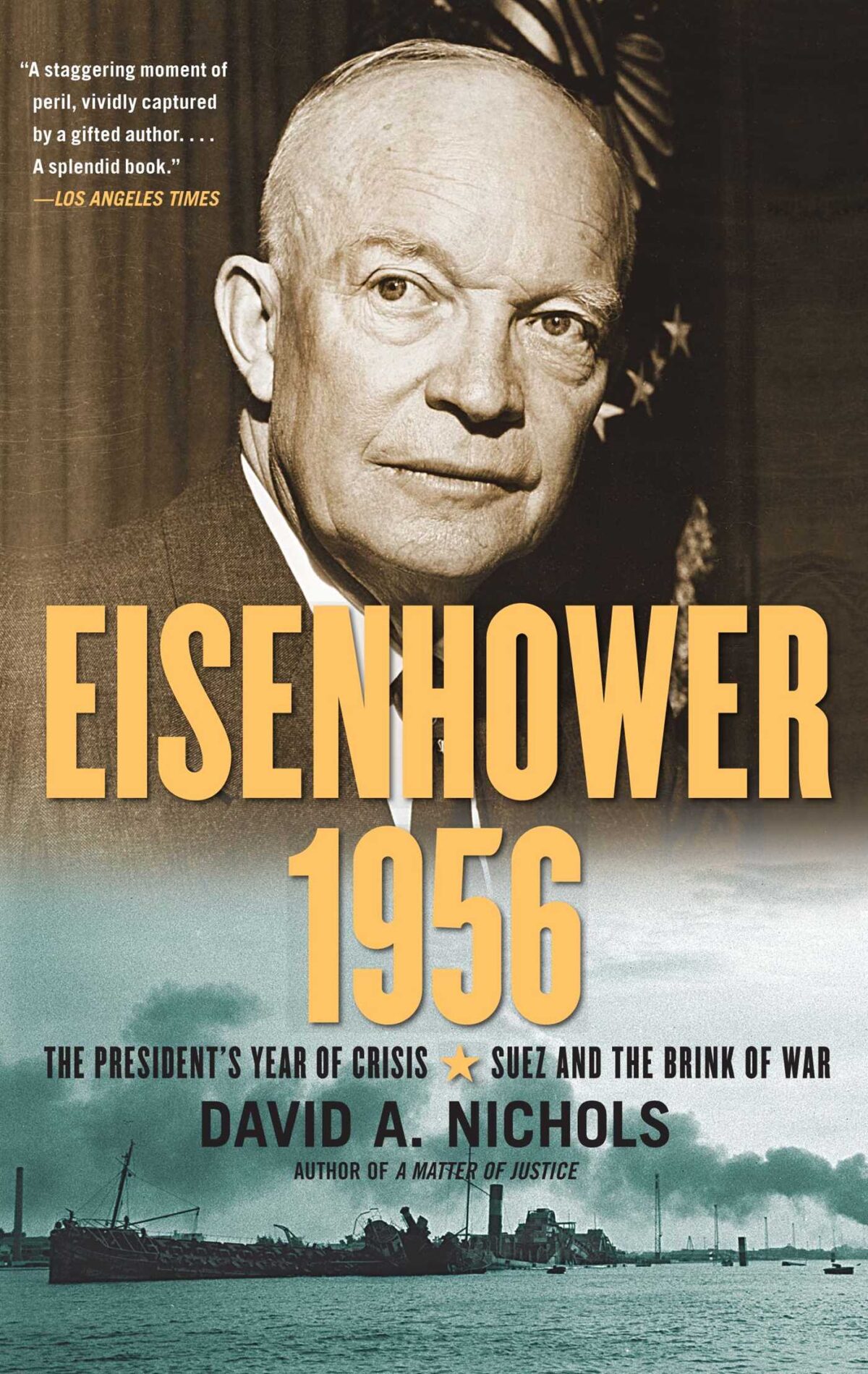Nichols, David A. Eisenhower 1956, the President’s Year of Crisis: Suez and the Brink of War. New York: Simon & Schuster, 2011.
Though my study of the British Empire has been very much weighted towards the nineteenth century, I have done no small amount of reading on the twentieth, including that period after the Second World War known as decolonization, when the European empires slowly lost their grip on their remaining colonies. Indeed, my undergraduate capstone seminar was entitled The Decolonization of Africa, and John Darwin’s The Empire Project in particular revolutionized my conception of this period and possibly its most pivotal event, the Suez Crisis of 1956. Intrigued, I dusted off another long-time resident of my bookshelf, Eisenhower 1956, David Nichols’ in-depth examination of the crisis from the standpoint of the American administration that played such a role in its resolution. My curiosity was well worth it, as I was treated to as comprehensive a treatment as I could have asked for, yet at the same time I couldn’t help but feel dissatisfied by Nichols’ failure to do anything with his gripping narrative.
For those unfamiliar with the Suez Crisis, the parallel threads of European decolonization, Cold War rivalry, and Egyptian modernization combined in 1955-56 to create a perfect storm of diplomacy gone bad. In response to the withdrawal of American aid for building the proposed Aswan High Dam (itself a reaction to an Egyptian arms deal with the Soviets, which was in turn caused by American restrictions on its own arm deals), Egypt’s President Gamal Abdel Nasser nationalized the Suez Canal, which had been owned and operated by a joint Anglo-French company since the late 1800s. The West was predictably shocked and outraged, yet while President Eisenhower committed the United States to a policy of mediation, his NATO allies Britain and France commenced to conspire with Israel in a grand plot to take back control of the canal through an Israeli invasion of Egypt followed by an Anglo-French ultimatum for a cease-fire. It was only Eisenhower’s principled stand against his own allies that led to the withdrawal of forces from Egypt and the loss of Britain’s last colonial linchpin in Asia.
Nichols relates these events in compelling fashion, laying out the blow-by-blow developments of the crisis while simultaneously emphasizing the importance of concurrent events and the context of the Cold War more generally. I had not realized just how dire that year had been for Eisenhower; not including Suez, those 12 months included a major heart attack, major intestinal surgery, the decision to run for reelection, the Soviet suppression of uprisings in Poland and Hungary, and Ike’s actual reelection–this last on the very night the Suez Crisis came to a close. Nichols’ writing style takes full advantage of the plethora of sources available to modern historians, and at times Eisenhower 1956 can feel like a series of breaking news bulletins, conducting breathless readers through months fraught with the threat of global, even nuclear, conflict. This last consideration plays a pivotal role in Nichols’ narrative alongside Eisenhower’s medical conditions; whereas the latter took Ike away from the helm at critical moments that allowed Suez to spiral into the crisis it became, the fear of nuclear holocaust if Anglo-French actions brought the Soviets to Egypt’s aid resulted in the deft, even brilliant, American foreign policy decisions that resolved the issue.
Yet despite it being a good work of history, I cannot quite bring myself to call Eisenhower 1956 good history. Lack of any meaningful framing or historiography left me wondering whether this was a new take on the crisis or simply a synthesis of existing opinion. While I appreciated the addition of some global context, Nichols’ arguments for the importance of Soviet actions in Hungary during the crisis never quite land, while his decision to leave out any meaningful discussion of decolonization despite its omnipresence in much of the rhetoric he cites is baffling. Indeed, combined with no real effort to critically examine his actors in historical context other than general Cold War concerns, this prevents Eisenhower 1956 from reaching real value as a work of history. I was particularly disappointed that more time was not devoted to the immense bumbling of the CIA in missing all signs of both of the key events of the crisis, the nationalization of the canal and the Anglo-French-Israeli conspiracy. The decision to conclude on vague references to the United States taking the role of peacekeeper in the Middle East and the strength of Eisenhower’s leadership was the last nail in the coffin of unfulfilled potential.
Still, I cannot say I did not enjoy Nichols’ work. For those unfamiliar with the events of 1955-56, either in whole or in part, Eisenhower 1956 certainly provides a comprehensive and engaging history of a year that might well have spelt the end of human civilization as we know it. If looking for more, however, you’ll need to pair it with a more analytical attempt at placing those events in the larger context of global history.
